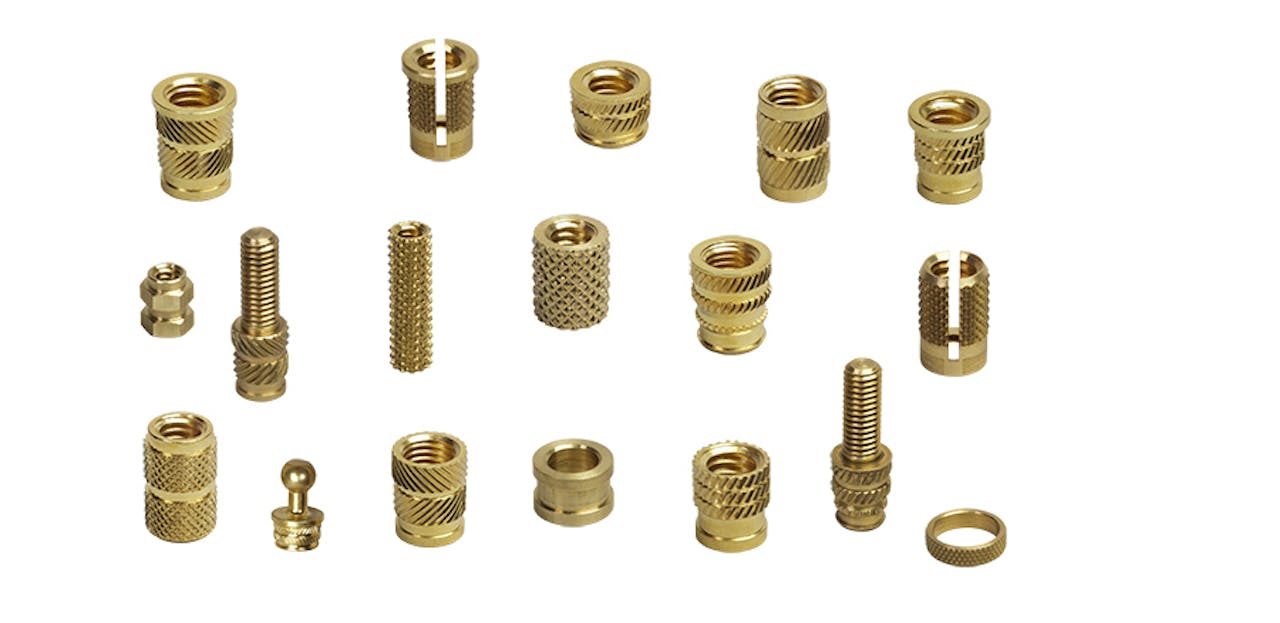Threaded Insert Installation Methods
There are several installation methods to choose from for threaded inserts. Review this list to determine the right installation method for your application.
Insert Molding: Molding a threaded insert into a plastic assembly increases the total molding time because extra time is needed to load the insert. Molded-in inserts may also cause sink marks. They are widely used with thermoset (non-meltable) plastics.
Post-molded: Post-molded inserts eliminate the downtime associated with molding a thread or an insert into a plastic part, such as die damage caused by improper placement. Advantages include faster assembly, reduced open press time, and no sink marks.
Ultrasonic: The most common method for installing threaded inserts into thermoplastic materials is ultrasonic installation, which provides fast, positive anchoring. An insert is placed in a molded or drilled hole which guides it and provides resistance. An ultrasonic horn contacts the insert and delivers ultrasonic vibrations which travel through the insert during the “weld cycle.” Frictional heat is immediately developed which melts the plastic as the horn drives the insert into position. After the vibrations cease, the equipment applies clamp pressure until the plastic cools, preventing back-out.
Thermal: During thermal/heat insertion, the threaded insert is placed into a molded or drilled hole. Pressure is applied with a heated probe that contacts the top surface and minor thread diameter of the insert. Localized melting takes place, and plastic flows in and around the knurls and serrations. When the proper depth is reached, the probe is removed and the plastic re-solidifies, locking the insert in place. Upon removal of the probe, a minimal amount of withdrawal (back-out) of the insert may occur. Thermal/heat insertion provides a good alternative to the ultrasonic method, but it is a slower process. Some benefits include:
- Multiple inserts can be installed simultaneously, even on different levels
- Quiet when compared to ultrasonic
- Thermal equipment is less expensive than ultrasonic equipment
- Excellent for larger inserts
Cold Insertion: Some inserts can simply be pressed in after molding. However, pressing inserts into cold plastic may create unwanted stress. A larger boss (or wall thickness) is required to prevent stress fracture. Pull, torque, and jack-out strengths are significantly lower compared to thermal or ultrasonic installation.
What are Threaded Inserts?
Threaded inserts are metal components used to strengthen plastic parts in which screws are to be installed and removed more than once. Most inserts are made of brass, which provides long thread life as well as a solid, secure fastening base. However, they can also be manufactured from aluminum, stainless steel, and free-machining steel.
Threaded inserts are commonly used to reinforce two types of plastic: thermoplastic or thermoset plastic. Thermoplastics are like wax. At usable temperatures they are solid, but at elevated temperatures, they get soft and melt. In contrast, thermoset plastics have a molecularly cross-linked structure that is permanently “set” into shape during the manufacturing process.

Variables to Consider
There are many variables to consider in your installation including:
Plating and Color-coding: We offer a full range of plating and/or color-coding services. The most common metal finishes include nickel, tin, and zinc. Inserts of similar size and configuration are often color-coded to prevent inadvertent mixing (inch threads vs. metric threads).
Molded Versus Drilled Holes: Molded holes provide better performance than drilled holes because a strong skin of denser material is formed around them during molding. This is particularly true with structural foam plastics which are porous under the skin.
Lubricants, Fillers, or Glass in the Plastic: If the plastic’s filler or glass content exceeds 40%, assembly or performance problems may result.
Have Questions?
Didn't find the answer you were looking for? Contact an MW expert for more details.